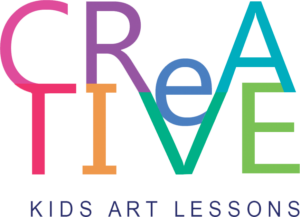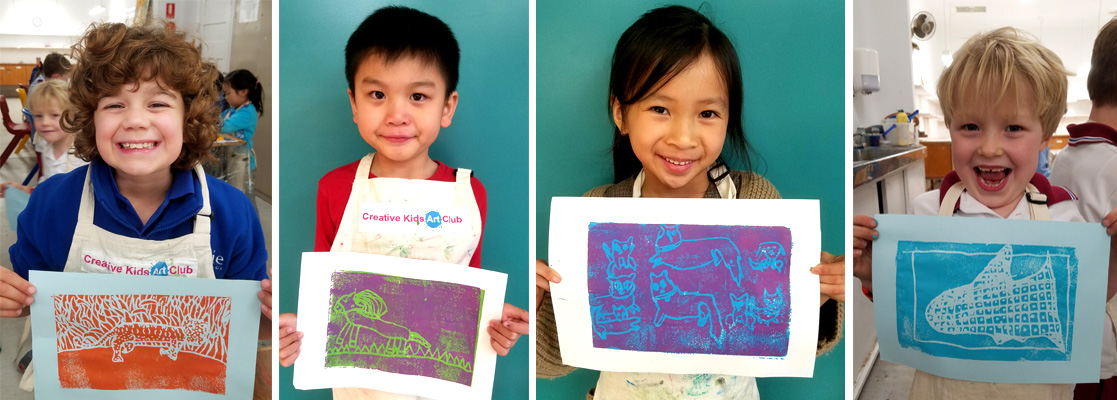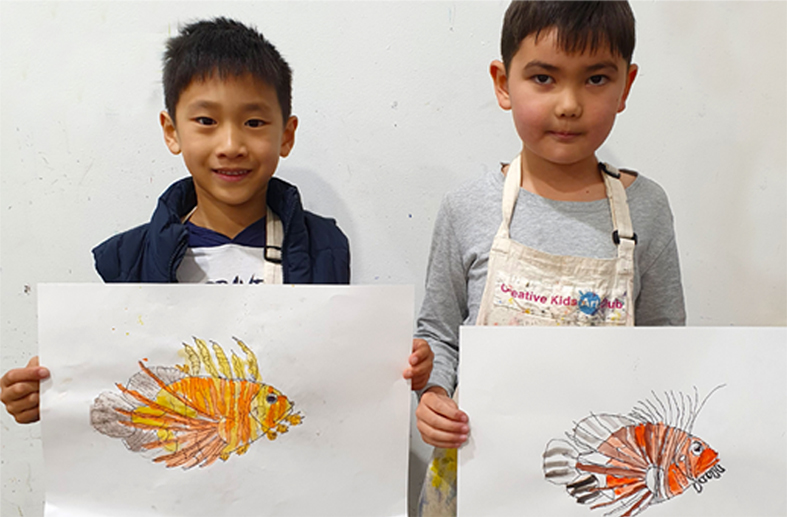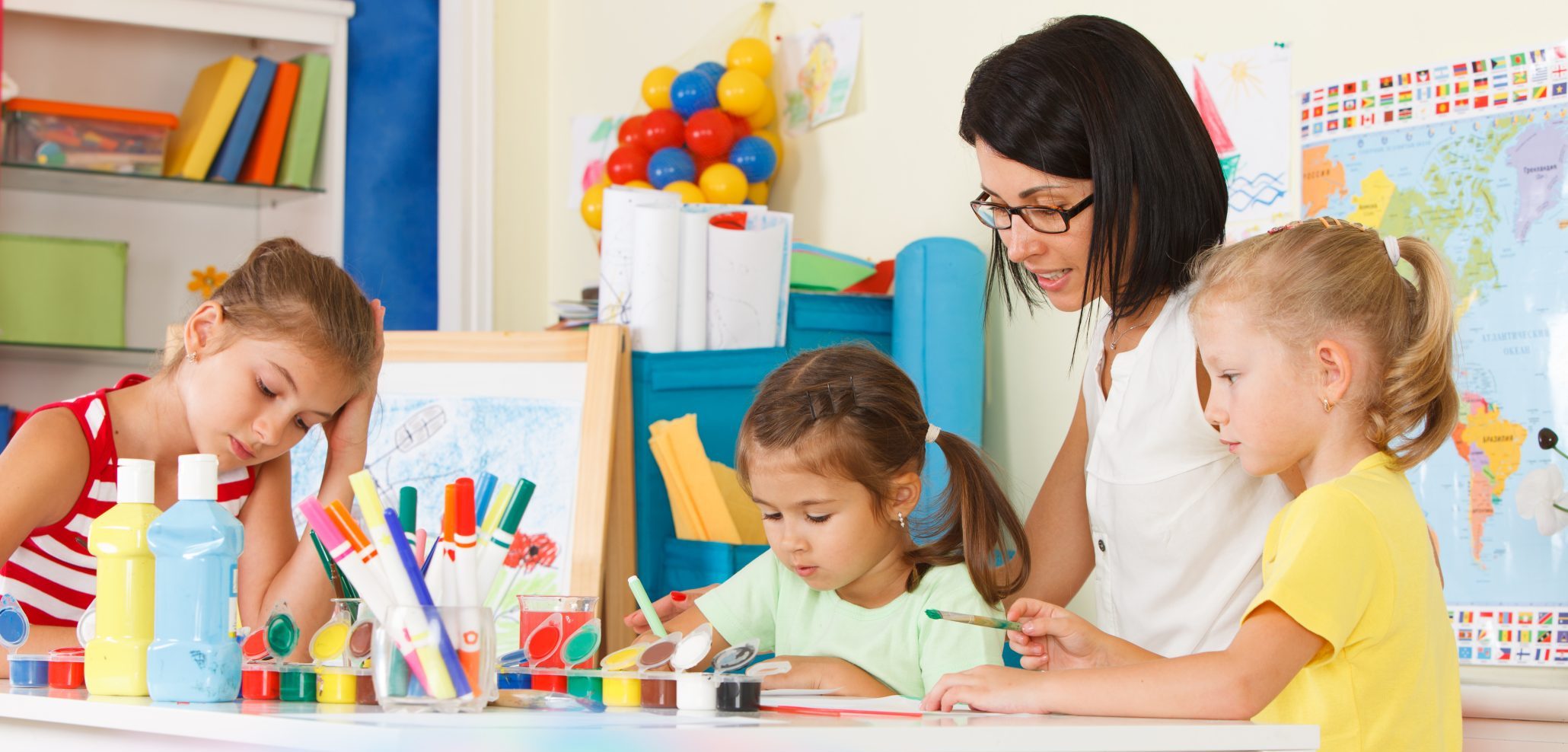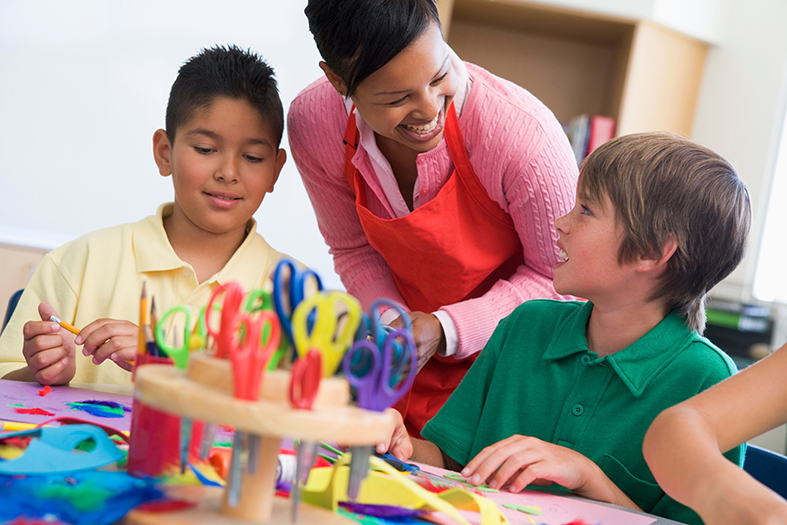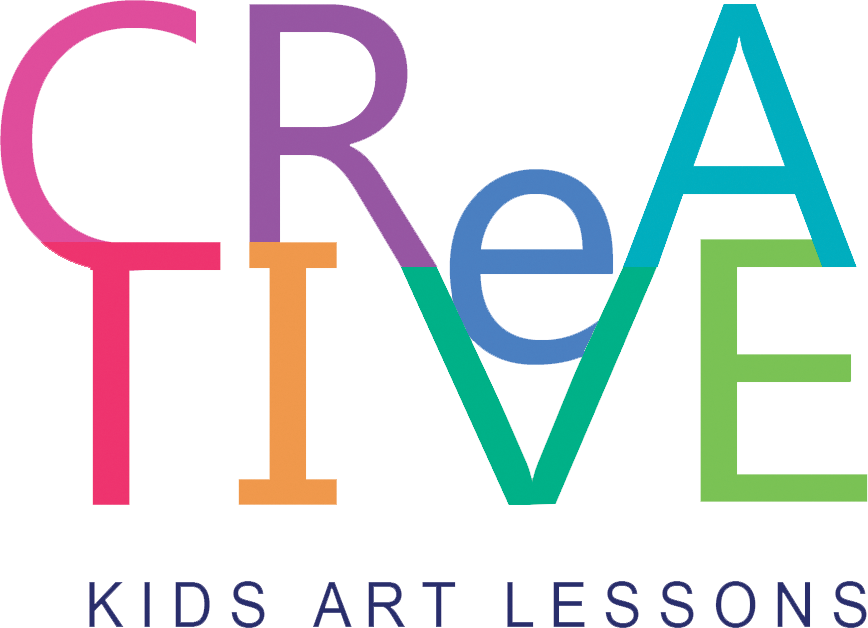There are many great moments in the art room. Kids may have just learnt a new skill or have finally grasped a concept, or they have just created amazing work that has blown you away!
This memory is different though and it is one that has stayed with me for years. It really showed me the power of art and creativity. It was in my early days of teaching printmaking so while we created basic prints the memory of that day is still with me.
It happened while teaching an after-school art class for 5 to 8yr olds. One of my students arrived late, upset and in tears. Something had happened at school that day which had really distressed her, she hadn’t had a good day. She really wasn’t keen on participating in the class even though she loved art. It was usually her favourite thing to do.
Printmaking in the Artroom
We were doing a printmaking project where the kids drew an image onto polystyrene sheets and then created a series of prints. Our topic was animals, with the odd feather or bird added in! We had several reference images the kids could choose from.
I spoke with this child,
‘Sometimes art can help you feel better. You could come in and see if it might help you today. If you just want to watch for a bit then you can decide if you want to join in’.
She agreed, still unsure but prepared to give it a try.
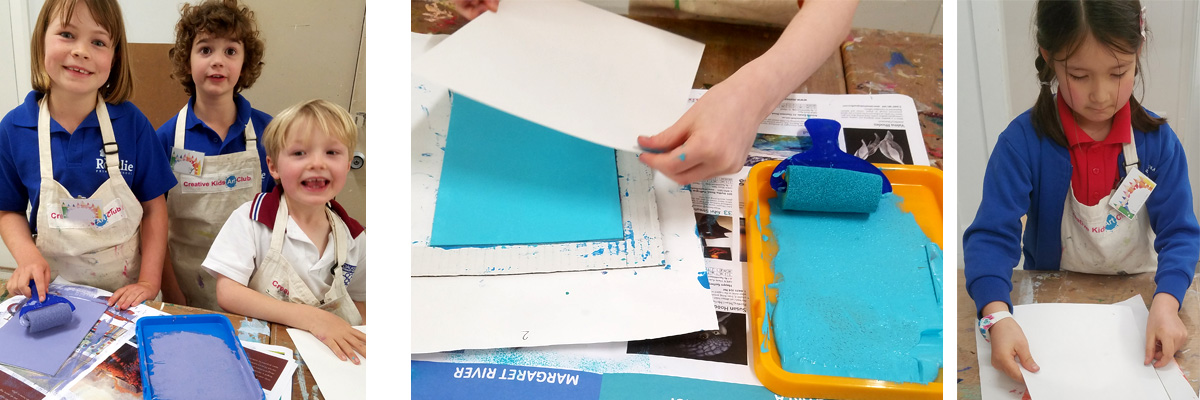
The Printmaking Demo
I started the demo for the printing of the plates we had created the week before. We printed a coloured background, showing the group how to use the registration corner to line up their prints. I then printed my animal plate onto the coloured background and to my surprise the class was so excited they burst into spontaneous applause. Printmaking to them was like magic!
My young student decided to join in, this looked like fun. She went about the process of creating her prints. She had listened well to the instructions and printed her animal plate onto paper. Our class ran for an hour and at the end of that class she was beaming from ear to ear, holding her gorgeous print. The upset of the day all forgotten. In one hour, this child had gone from being really upset to the happiest child in the class! I was astounded by the difference one hour of art had made.
The Power of Art
When you think about it, art provides an outlet for children to express their emotions, thoughts, and experiences, which they might not be able to articulate with words. By creating art children become involved in the process of creating and can convey complex feelings and ideas in a non-verbal form. Artists as well create artwork as a form of self-expression, it is a way to articulate who they are non-verbally. Talking about their art is dreaded by many a professional artist.
Art also helps children to manage their emotions. The process of creating art can be exciting and at the same time it also requires a level of focus which is calming and meditative. This focus helps to reduce stress, anxiety, and frustration students may be feeling. Art encourages mindfulness and focus, which can in turn promote a sense of inner peace.
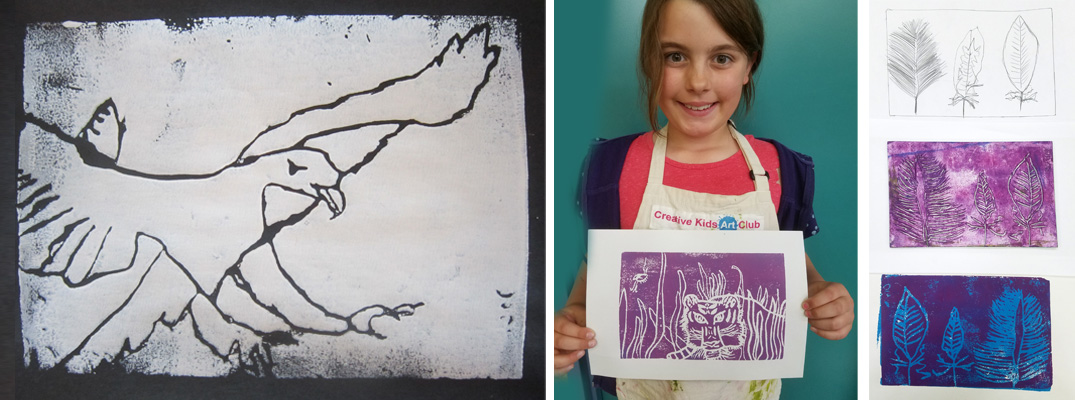
The Wonderful Thing About Creating
Completing an art project can boost a child’s self-esteem and confidence. Seeing their ideas come to life and receiving positive feedback gives them a sense of accomplishment and worth. This was certainly the case with my young student, the pride in her work and the smile on her face said it all!
Art also encourages creative thinking and problem-solving. When children are faced with artistic challenges, such as deciding how to represent an idea, they develop critical thinking skills and resilience.
Participating in a group of kids that all love art provided and opportunity for social interaction and collaboration. Sharing the art materials and print stations fostered teamwork and empathy in our class and helped the children understand and relate to the perspective of other kids.
Helping Each Other
We worked in pairs to help each other register our prints and remind each other of the process; putting the paper in the clean area, putting the plate in the roll up area, rolling the paint onto the print, placing the print in the registration plate and lining up the paper on top, rolling with a brayer or hard roller and finally pulling off the print and reviewing our artwork.
Participating in art increases a child’s ability to empathize with others and it broadens their emotional and social awareness.
There are many benefits to kids by participating in art classes. Not only does art stimulate the brain and help in the development of fine motor skills but spatial awareness and cognitive processing are also enhanced. This holistic development supports emotional well-being by giving children the tools they need to navigate their world.
Incorporating art into a child’s life can play a crucial role in their emotional growth and overall well-being. So, remember as you go about the everyday tasks of teaching and the busy-ness of your day in the art room what one hour of art can do for a single child in your class. It can really change their day for the better. Art is important!
Printmaking projects for K-2:
Colourful Jellyfish ink print project using ink and tracing paper in the Art from Australia unit
Simple Polar Bear printmaking with forks from the Tundra unit
Orla Kiely inspired flower print from the UK Artists unit.
Baboon print and Leopard print from the African Animals unit
Year 3-4 Easy printmaking
Yayoi Kusama Flowers with cork prints from the Women Artists unit
Latest Articles
Popular kids art lessons for teachers and ideas for the artroom
Sometimes Engaging upper primary boys in art class can be […]
The M+E Art Curriculum – Me and Environment As educators, one of […]
The Art Room Budget Work out what your total yearly […]
